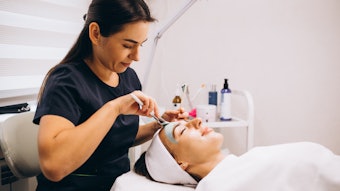
A study in Plastic and Reconstructive Surgery (May 2016) used digital image correlation to compare dynamic strain reduction between three U.S. Food and Drug Administration (FDA)-approved formulations of botulinum toxin: onabotulinumtoxinA (Botox, Allergan), abobotulinumtoxinA (Dysport, Galderma) and incobotulinumtoxinA (Xeomin, Merz).
The study enrolled 73 treatment-naive women, randomized to injection with onabotulinumtoxinA (20 units), abobotulinumtoxinA (60 units) or incobotulinumtoxinA (20 units) in the glabella. Imaging was conducted at 4, 14 and 90 days after injection, and changes in average dynamic strain of the glabella were compared using analysis of variance (ANOVA).
At day four, there was a 42.1% strain reduction in the onabotulinumtoxinA group, a 39.4% strain reduction in the abobotulinumtoxinA group, and a 19.8% strain reduction in the incobotulinumtoxinA group. At day 14, there was a 66.1% strain reduction in the onabotulinumtoxinA group, a 51.4% strain reduction in the abobotulinumtoxinA group, and a 42.8% strain reduction in the incobotulinumtoxinA group. At day 90, there was a 43.5% strain reduction in the onabotulinumtoxinA group, a 38.4% strain reduction in the abobotulinumtoxinA group, and a 25.3% strain reduction in the incobotulinumtoxinA group. Overall, the investigators concluded that their results confirmed the companies’ assertions that the formulations are not interchangeable.
Photo copyright Getty Images.











